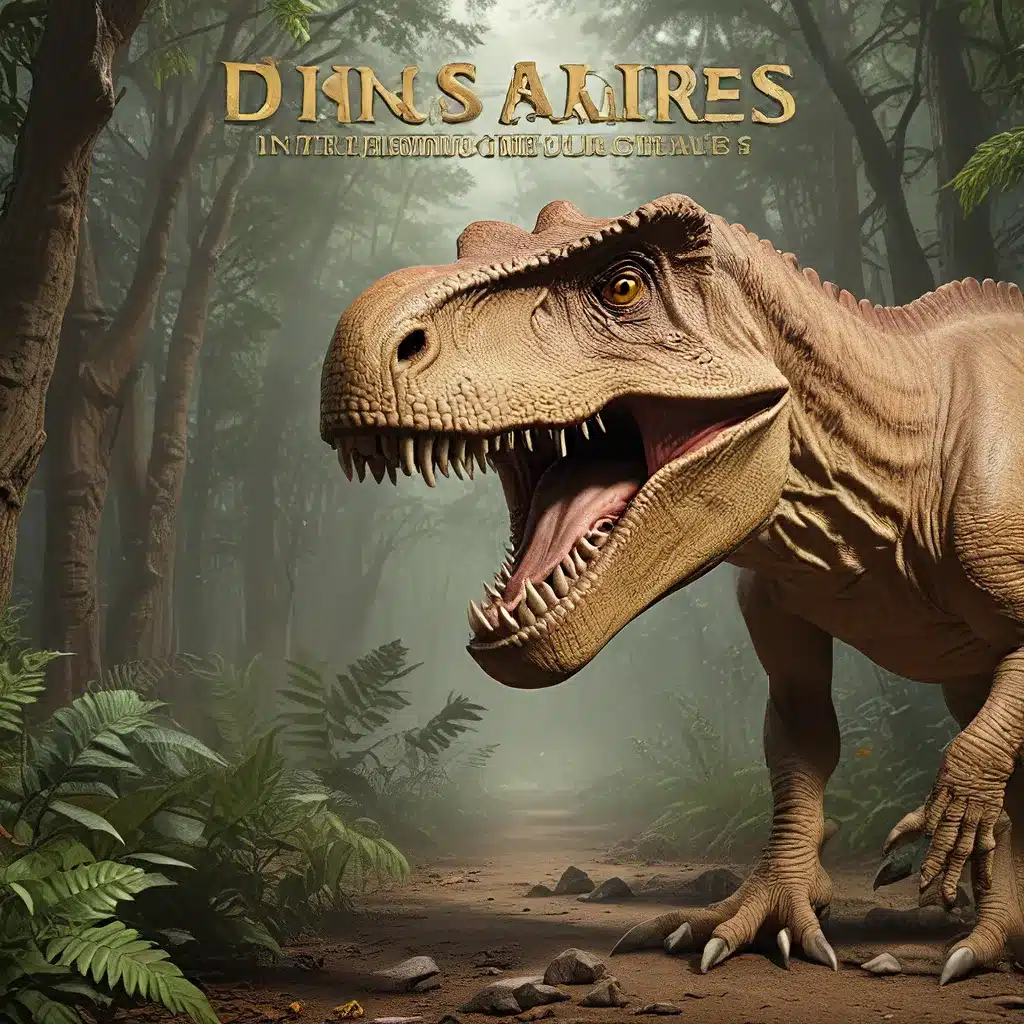
Unveiling the Mysteries of Prehistoric Existence
Humanity’s fascination with dinosaurs and their extraordinary world has endured for centuries, captivating our collective imagination with tales of colossal creatures that once roamed the Earth. As our understanding of paleontology has evolved, the dialogue between science and faith has become increasingly intertwined, shedding light on the intricate tapestry of life during these ancient eras.
Paleontology, the science that unravels the æons-long story of life on our planet, has opened a window into the diverse and often awe-inspiring world of dinosaurs. From the towering Tyrannosaurus Rex to the horned Triceratops, these magnificent creatures have left an indelible mark on our understanding of the past, inspiring both scientific inquiry and theological contemplation.
Navigating the Intersection of Faith and Science
The debate surrounding the age of the Earth and the existence of dinosaurs has been a subject of rich discussion, with contrasting perspectives of Young Earth Creationism and Old Earth Creationism shaping the dialogue. While some interpret the biblical narratives in Genesis and Job as alluding to the presence of these prehistoric giants, others seek to reconcile the scientific evidence with their faith, exploring the complex interplay between scriptural interpretations and paleontological discoveries.
Young Earth Creationism vs. Old Earth Creationism
The Young Earth Creationist perspective asserts that the Earth is approximately 6,000 years old, a belief that challenges the scientific consensus on the age of the planet. Proponents of this view often interpret the biblical account of creation as a literal timeline, arguing that dinosaurs coexisted with humans during the early stages of Earth’s history. On the other hand, the Old Earth Creationist approach acknowledges the scientific evidence for a much older Earth, seeking to integrate this knowledge with a theological understanding of the divine creation process.
Interpreting Biblical Narratives
Within the biblical texts, the descriptions of creatures like Behemoth and Leviathan have captivated the imagination of scholars and theologians, with many drawing parallels between these enigmatic entities and the colossal dinosaurs of the prehistoric world. While some interpret these biblical references as purely symbolic, others delve into the possibility of a historical record of human encounters with these majestic creatures.
Exploring Ancient Artwork and Artifacts
The relationship between dinosaurs and the rich tapestry of ancient mythology and art offers a compelling glimpse into the potential coexistence of these creatures and human civilizations. Legends of giant reptiles have pervaded numerous cultures, from the Romans to the Mayans and Babylonians, suggesting a deep-rooted fascination with these prehistoric giants.
Ancient artwork and artifacts depict fantastic beasts that bear a striking resemblance to dinosaurs, underscoring the profound impact these creatures had on the human imagination. This intertwining of mythology and paleontology challenges us to consider the possibility of a more complex and interconnected relationship between humans and dinosaurs than previously believed.
Noahs Ark and the Great Flood
The biblical account of Noah’s Ark and the Great Flood presents a captivating narrative that intersects with the existence of dinosaurs, sparking debates and theories among creationists and skeptics alike. The capacity of the Ark and the potential inclusion of various dinosaur genera have been the subject of intense discussion, with some proposing theories of post-flood survival and extinction.
While the specifics of these theories remain widely debated, the convergence of biblical narratives and paleontological evidence continues to captivate the public imagination, inviting deeper exploration of the mysteries that lie within our planet’s ancient past.
Diverse Perspectives on Dinosaurs and Faith
Within the Christian community, the existence of dinosaurs has sparked a diverse range of perspectives, reflecting the broader dialogue between creationism and evolution. From those who assert the coexistence of humans and dinosaurs to those who view these prehistoric creatures as part of a divine evolutionary process, the spectrum of beliefs highlights the richness and complexity of this discourse.
Primal, the critically acclaimed animated series, explores the intricate relationship between Spear, a Neanderthal, and Fang, a female Tyrannosaurus rex, as they navigate the challenges of a fantastical prehistoric world. This captivating narrative not only entertains but also invites deeper reflection on the potential coexistence of humans and dinosaurs, blending elements of science, mythology, and theology.
Bridging the Divide: Faith and Science
The dialogue between faith and science regarding the existence and interpretation of dinosaurs underscores the multifaceted nature of this discourse. While some religious leaders and biblical scholars maintain a strictly literal interpretation of scriptural accounts, others seek to integrate the scientific evidence and paleontological discoveries into their theological framework.
This rich tapestry of perspectives emphasizes the need for open and respectful dialogue, one that embraces the complexities of our ancient past and acknowledges the contributions of both scientific inquiry and faith-based interpretations. By navigating this intricate terrain, we can deepen our understanding of the mysteries that lie within our world’s history, fostering a greater appreciation for the grandeur of creation and the enduring questions that continue to captivate our collective imagination.
Conclusion: Unraveling the Tapestry of Prehistoric Existence
The exploration of dinosaurs within the context of biblical narratives and scientific discoveries has revealed a fascinating interplay between faith and science, inviting us to delve deeper into the mysteries of our world’s ancient past. From the age of the Earth to the biblical creatures that have captured the imagination of scholars and believers alike, this dialogue has underscored the diversity of perspectives and the enduring fascination with these magnificent prehistoric creatures.
As we continue to unravel the intricate tapestry of life during these ancient eras, we are reminded of the interconnectedness of our world, where scientific inquiry and theological contemplation can work in harmony to enrich our understanding and inspire our awe at the grandeur of creation. By embracing this multifaceted dialogue, we are poised to uncover even more captivating insights into the hidden histories that lie within the lost kingdoms of our planet’s past.


